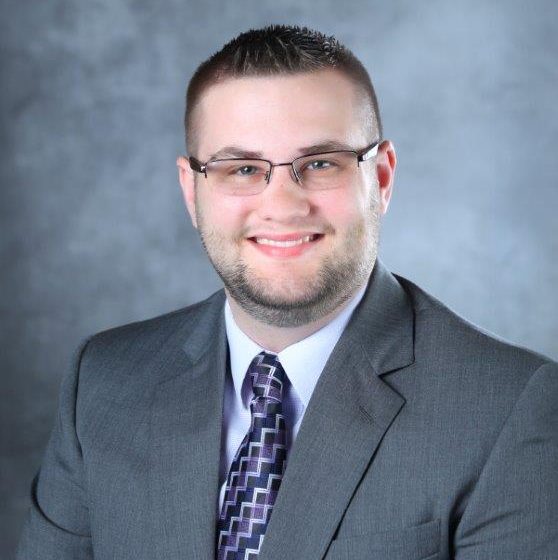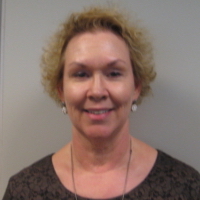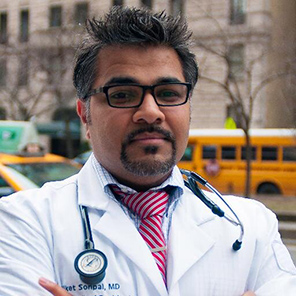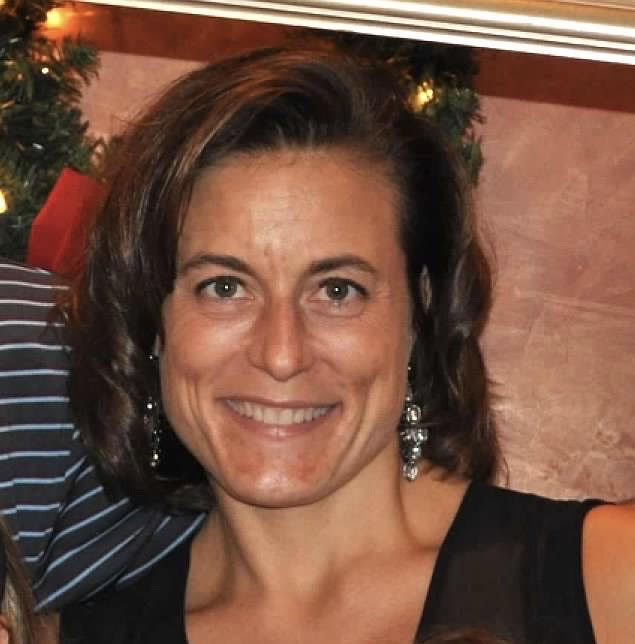
Medgeeks
Primary Care Medicine
Essentials Plus 2024
Exclusive Offer - 50% off
This exclusive offer includes:
-Our Primary Care Essentials course (qualifies 50 CAT 1 CME)
-Our Foundation medicine course (qualifies for 50 CAT 1 CME)
-Access to our online forum for clinical questions
-Weekly zoom sessions to ask questions and collaborate with fellow clinicians
-Monthly live sessions on various primary care topics. Join live or view the recordings afterward
Join by entering your information below and selecting the option that works best for you.
Not sure what's included? Scroll down for more details.
Primary Care Essentials Curriculum
We’ve created a structured primary care medicine program to help get you up to speed with the most commonly encountered problems in practice.
This is self paced so you can go through the program on your time. The program is comprised of 107 hours of training (video, audio, & slides) every primary care medicine clinician needs to know. After completion, you’ll be awarded 50 CAT 1 CME credits that are accepted by AAPA, AANP and ANCC.
Get your questions answered:
Although it’s a self-paced program, our instructors make themselves available Monday – Friday to answer any questions you may have through our primary care forum. This is a private community where you can post clinical questions at any time.
You also have the option to join our instructors on Zoom every week for our primary care Q&A should you need additional guidance (no additional charge).
Monthly live updates:
Every month we host a live zoom training on various primary care topics. You can join live and watch the recording afterward.
- Mental frameworks to accelerate learning
- The clinician mindset
- Connecting with patients
- Learning to be successful in medicine
- Why clinicians burnout
- Documentation in primary care
- Coding Part 1
- Coding Part 2
- Legal documentation
- Controlled drug agreements and urine drug screening
- The diagnostic process
- The physical exam
-
General observation
-
Mental status
-
Abdominal exam
-
Pulmonary exam
-
HEENT exam
-
Cardiovascular exam
-
Vascular exam
- Musculoskeletal exam
- Neurological exa
- Preventative medicine in primary care
- The well child exam
- Vaccinations
- Pre-operative clearance
- Acute cough
- Low back pain
- Joint pain
- Dermatology (common skin conditions)
- Chest pain
- Dyspnea
- Weakness and dizziness
- Abdominal pain and constipation
- Eye complaints
- Abnormal uterine bleeding (non-pregnant)
- Microhematuria
- Headache
- Rheumatology pearls
- Unintended weight loss
- Summer rashes
- Insect & Arthropod Bites/Stings
- Hypertension
- Anxiety and depression
- Urinary tract infection and pyelonephritis
- Type 2 diabetes
- Obesity
- Hypothyroidism
- Hyperthyroidism
- Hypertriglyceremia
- Peripheral neuropathy and restless leg syndrome
- Acute kidney injury and chronic kidney disease
- Secondary hypertension
- Upper respiratory infections and otitis media
- Viral exanthems
- Non-alcoholic fatty liver disease
- Gout
- Osteoporosis
- PCOS
- Hypogonadism
- Fibromyalgia
- Medication monitoring and lab interpretation
- Polypharmacy and deprescribing
- New type 2 diabetes treatments
- Topical steroids
- The Menstrual Cycle and
Menopause Hormone Replacement
Therapy - Birth Control and STIs
- HIV Pre-exposure prophylaxis
- Commonly used psych medications
- Pain management
- Procedures in primary care part 1
- Procedures in primary care part 2
- Pulmonary Function Testing
- Case Study: Is it the Heart or the Kidneys?
- Case Study: “Is it a False Pregnancy?”
- An interesting case of abdominal pain
- Fatigue, Dizziness and Low
Back Pain Case Studies
- Case studies: Difficult patient encounters
- Critical Thinking Skills: A Case Study on Incidentalomas and Primary Hyperaldosteronism
- Primary care case studies part 1
- Primary care case studies part 2
- Primary care case studies part 3
- Handling referrals
- Difficult patients and patient deaths
- Advanced care planning
- Alcohol use
- Smoking cessation
- Lymphadenopathy
- Incidentalomas
- In-Flight Medical Emergencies
- Radiology Terminology Explained
Your Instructors

Clay Walker PA-C
A graduate of the Southern Illinois University School of Medicine, Physician Assistant Program class of 2016. He currently works primary care and is the lead PA running the primary care residency program at Mayo Clinic.

Dr. Judy Finney
Judy Finney, M.D. graduated from the Michigan State University School of Medicine in the top 5% of her class.
She did her residency in internal medicine with Michigan State University Clinical Center and did a fellowship in cardiovascular disease at Ingham Regional Medical Center.
She also taught at Midwestern University School of Medicine.
From 2001 – 2008 she was a clinical professor taking on one student at a time during their 3rd year clinical cardiology rotation to really help them excel. During that time, she also taught EKGs, Heart Sounds, and Murmurs to everyone in their cardiology rotation.
From 2008-2011 Dr. Finney was assistant professor for the school of Medicine. During this time she re-wrote all objectives for the internal medicine rotation and created a database of questions they could use for testing during the internal medicine rotation.

Dr. Niket Sonpal
Niket Sonpal, M.D. practices internal medicine and is assistant professor of medicine at Touro Osteopathic School of Medicine, associate program director for the internal medicine residency program at Brookdale University hospital, director of Medical education at Picmonic, and chief strategy officer at Medquest Test Prep.

Liticia Arthur PA-C
Liticia graduated from the University of Kentucky in 1999. She’s worked most of her career in family medicine but has also worked in research, internal medicine, education, pharmaceuticals, and most recently the urgent care/covid clinic.

The Foundation 2024
Clinical Anatomy, Physiology, & Pathophysiology
Every great clinician’s medical foundation starts by understanding anatomy, physiology, and pathophysiology.
Typically, as a clinician, a patient will come to you when they are sick. This means something isn’t functioning as it should. But, to truly understand the abnormal, you must first master what’s normal.
As soon as you understand how the body works in perfect harmony, you can shift your focus to the pathophysiology. We can’t emphasize enough how vital mastery of these core concepts is when managing patients.
Meet Your Instructor

Dr. Judy Finney
A graduate from the Michigan State University School of Medicine in the top 5% of her class. Dr. Finney did her residency in internal medicine with Michigan State University Clinical Center and a fellowship in cardiovascular disease at Ingham Regional Medical Center.
Dr. Finney was also an assistant professor at the Midwestern University School of Medicine. During this time she re-wrote all objectives for the internal medicine rotation and created a database of questions they could use for testing. For seven years she was a clinical professor taking on one student at a time during their 3rd year clinical rotations to help them excel.
Believe us when we say she knows how to take a student from novice to master.
The Curriculum
We’ve decided to take on a different approach. Instead of separating these subjects, we’ll be integrating anatomy, physiology, and pathophysiology together. We’ll also discuss diagnostic testing and pharmacology together as it relates to the foundational concepts of medicine.
This will allow you to get the complete picture much more clearly.
The goal here is to go deep and leave no stone unturned. Because of this, we’ll be adding brand-new lectures twice a month. We want to build a comprehensive library so you can dive deep into whatever topic you’re struggling with and/or want to reinforce.
Everything is organized and easily accessible inside your dashboard. Lectures come complete with video, audio, and slides.
After completion of the Cardiology section, you’ll be awarded 50 CAT 1 CME credits that are accepted by AAPA, AANP and ANCC.
- Study Strategies For Anatomy, Physiology, Pathophysiology, and Pharmacology (30 min)
- Background and Introduction (1 hr 11 min)
- Introduction to the Cardiovascular System (2 hrs 10 min)
- The Cardiac Cycle (1 hr 30 min)
- The Circulatory System (1 hr 38 min)
- How Flow Works in Circulatory System (1 hr 20 min)
- Blood Pressure Regulation Part 1 (1 hour 19 min)
- Blood Pressure Regulation Part 2 (1 hour 30 min)
- Myocardial Contractility (1 hour)
- Whole Heart Contractility and Pressure Volume Loops (1 hr 7 min)
- Moving From Pressure Volume Loops to CHF (1 hr 50 min)
- From CHF to Rx Rationales (1 hr 30 min)
- Clinical Aspects of CV Function: Monitoring Lines (1 hr 40 min)
- Using Monitoring Lines in Clinical Situations: CHF (1 hr 29 min)
- Using Monitoring Lines for Clinical Situations: Shock (1 hr 52 min)
- Cases for Clinical Practice Using Hemodynamics (1 hr 29 min)
- Heart Electricity Works to Drive EKG Interpretation: Part 1 (1 hr 28 min)
- Heart Electricity Works to Drive EKG Interpretation: Part 2 (2 hr 4 min)
- Heart Electricity Works to Drive EKG Interpretation: Part 3 (2 hr)
- Heart Electricity Works to Drive EKG Interpretation: Part 4 (2 hr 6 min)
- Heart Electricity Works to Drive EKG Interpretation: Part 5 (2 hr 2 min)
- Murmurs and Heart Sounds: Part 1 (1 hr 9 min)
- Murmurs and Heart Sounds: Part 2 (1 hr 30 min)
- Physical Exam Findings in the Cardiovascular Exam (1 hr 25 min)
- Aortic Valve Disease (1 hr 54 min)
- Mitral Valve Regurgitation (1 hr 37 min)
- Mitral Stenosis & Atrial Fibrillation (2 hr 20 min)
- Arrhythmias Part 1 (1 hr 54 min)
- Arrhythmias Part 2 (1 hr 24 min)
- Coronary Artery Disease: Risks and Atheroma (1hr 36 min)
- Coronary Artery Disease: Clinical Events (1hr 52 min)
- Coronary Artery Disease: Diagnostic Tests (1 hr 37 min)
- Coronary Artery Disease: Treatment (1 hr 55 min)
- Shortness of Breath (1 hr 25 min)
- Anatomy and Lung Mechanics (1 hr 59 min)
- Compliance, Spirometry and Flow Volume Loops (1 hr 19 min)
- Turning Spirometry into Flow Volumes and PFTs (1 hr 14 min)
- The “Controls” of Breathing (1 hr 17 min)
- Chemoreceptors and other “Controls” of Breathing (1 hr 6 min)
- Alveoli and Surfactant (1hr 8 min)
- Ventilation and Perfusion (1 hr 14 min)
- Oxygen and Carbon Dioxide Transport (1hr 22 min)
- Physical Exam Findings (1 hr 20 min)
- Pulmonary Circulation(s) (1 hr 42 min)
- Approach to the ABG (1 hr 17 min)
- Asthma (1 hr)
- Hypoxia vs. Hypoxemia (1 hr)
- Respiratory System in High Altitudes (1 hr 15 min)
- The Lungs in Exercise (1 hr 29 min)
- Other Lung Tests and Testing Approaches ( 1 hr 15 min)
- Respiratory Review and Cases: Part 1 (1 hr 12 min)
- Respiratory Review and Cases: Part 2 (1 hr 52 min)
- Respiratory Review and Cases: Part 3 (2 hrs 9 min)
- Epithelial Tissue and Connective Tissue (2 hrs)
- General Overview (1 hr 37 min)
- Red Blood Cells (1 hr 45 min)
- White Blood Cells Part 1 (1 hr 12 min)
- White Blood Cells Part 2 (1 hr)
- White Blood Cells Part 3 (1 hr 30 min)
- Platelets and Coagulation (1 hr 48 min)
- The Spleen (1 hr 7 min)
- Lymph Nodes Part 1 (51 min)
- Lymph Nodes Part 2 (1 hr 16 min)
- Lymph Nodes Part 3 (1 hr 20 min)
- The CBC (1 hr 25 min)
- More Common Anemias (1 hr 35 min)
- Less Common Anemias (1 hr 25 min)
- Anemia Wrap Up and Case Files: Part 1 (1 hr 20 min)
- Anemia Wrap Up and Case Files: Part 2 (1 hr 25 min)
- Anemia Wrap Up and Case Files: Part 3 (1 hr 4 min)
- Anemia Wrap Up and Case Files: Part 4 (2 hrs 12 min)
- Renal Background Anatomy and Physiology (1 hr 42 min)
- Nephron Specifics: Glomerulus (1 hr 42 min)
- Nephron Specifics: The Proximal Convoluted Tubule (1 hr 24 min)
- Nephron Specifics: Other Parts of the Tubule (2 hr 4 min)
- Body Fluids and IV’s (1 hr 20 min)
- Nephrotic and Nephritic Syndrome (1 hr 39 min)
- Glomerulonephritis and Glomerulonephropathy (2 hr 5 min)
- Hematuria (1 hr 36 min)
- Renal Wrap-Up (1 hr)
- GI Background Anatomy and Physiology (1 hr 8 min)
- Background in Nutrition, Hormones and Neurons (1 hr 34 min)
- Nutrition (1 hr 49 min)
- Mouth to Esophagus (1 hr 46 min)
- Stomach: Part 1 (2 hrs 13 min)
- Stomach: Part 2 (2 hrs 11 min)
- Duodenum: Part 1 (1 hr 19 min)
- Duodenum: Part 2 (1 hr 51 min)
- Jejunum and Ileum: Part 1 (1 hr 11 min)
- Jejunum and Ileum: Part 2 (1 hr 35 min)
- Colon: Part 1 (1 hr 10 min)
- Colon: Part 2 (2 hrs 2 min)
- Pancreas: Part 1 (1 hr)
- Pancreas: Part 2 (1 hr 24 min)
- Pancreas: Part 3 (1 hr)
- Gall Bladder and Biliary Tree (1 hr 43 min)
- Liver: Part 1 (1 hr 26 min)
- Liver: Part 2 (1 hr 37 min)
- Liver Function Testing (2 hrs 5 min)
- Hepatitis Overview (1 hr 32 min)
- Hepatitis B: Part 1 (2 hrs)
- Hepatitis B: Part 2 (3 hrs)
- Hepatitis C: Part 1 (1 hr 40 min)
- Hepatitis C: Part 2 (2 hr 30 min)
- End Stage Liver Disease: Part 1 (1 hr 40 min)
- End Stage Liver Disease: Part 2 (1 hr 14 min)
- Anatomy and Physiology Overview: Part 1 (2 hrs 11 min)
- Anatomy and Physiology Overview: Part 2 (1 hr 42 min)
- Hypothalamus: Part 1 (1 hr 47 min)
- Hypothalamus: Part 2 (2 hrs)
- Pituitary Anatomy and Physiology (1 hr 43 min)
- Pituitary Diseases: Part 1 (2 hrs 2 min)
- Pituitary Diseases: Part 2 (1 hr 53 min)
- Pituitary Diseases: Part 3 (1 hr 38 min)
- Cushing’s Disease from Corticotroph Adenomas and Nonfunctioning Adenomas (1 hr 38 min)
- Thyroid and Parathyroid Anatomy and Physiology (1 hr 39 min)
- Hyperthyroidism on Spectrum of Thyroid Diseases (2 hrs 40 min)
- Hypothyroidism (2 hrs)
- Thyroid Nodules and Cancers (2 hrs 8 min)
- Other Endocrine System Pathways and Diseases: Part 1 (2 hrs 17 min)
- Other Endocrine System Pathways and Diseases: Part 2 (1 hr 59 min)
- Other Endocrine System Pathways and Diseases: Part 3 (2 hrs 41 min)
- Pancreas as an Endocrine Organ: Part 1 (1 hr 37 min)
- Pancreas as an Endocrine Organ: Part 2 (1 hr 31 min)
- Mechanism Behind DM Medications (1 hr 59 min)
- DM Treatment Part 1 (2 hrs)
- DM Treatment Part 2 (2 hrs 24 min)
- Diagnosis DM Types (1 hr 25 min)
- Anatomy and Physiology of Bones and Joints (1 hr 41 min)
- Anatomy and Physiology of Muscles (1 hr 21 min)
- Neuromuscular Junction and Motor Unit (1 hr 24 min)
- Muscle Mechanics: Part 1 (1 hr 32 min)
- Muscle Mechanics: Part 2 (1 hr 55 min)
- Muscle Disease: Part 1 (1 hr 31 min)
- Muscle Disease: Part 2 (1 hr 41 min)
- Osteoporosis: Part 1 (1 hr 22 min)
- Osteoporosis: Part 2 (1 hr 13 min)
- Disease of the Bone and Joint (1 hr 40 min)
- Osteomyelitis (1 hr 26 min)
- Osteoarthritis (2 hrs 28 min)
- Rheumatoid Arthritis: Part 1 (1 hr 36 min)
- Rheumatoid Arthritis: Part 2 (1 hr 33 min)
- Rheumatoid Arthritis: Part 3 (2 hrs 10 min)
- Disease of Neuromuscular Junction, Thymus, and Myasthenia Gravis (1 hr 25 min)
- Neuron Anatomy and Function (1 hr 18 min)
- Neuroanatomy and Physiology: Autonomic Nervous System (2 hrs 18 min)
- Neuroanatomy and Physiology: Parasympathetic vs Sympathetic (1 hr 32 min)
- Neuroanatomy and Physiology: Neurotransmitters and Receptors (2 hrs)
- Pharmacology Concepts (2 hrs 40 min)
- Catecholamines, Neurons, and Receptors (1 hr 43 min)
- Sympathomimetics Overview (1 hr)
- Sympathomimetic Drug Agonists and Receptors (1 hr 33 min)
- Sympatholytics (1 hr 42 min)
- Nicotinic vs. Muscarinic Receptors & Pharmacology: Part 1 (1 hr 43 min)
- Nicotinic vs. Muscarinic Receptors & Pharmacology: Part 2 (1 hr 42 min)
- Autonomic Nervous System Disease (1 hr 43 min)
- CNS: Brain & Spinal Cord Anatomy: Part 1 (1 hr 27 min)
- CNS: Brain & Spinal Cord Anatomy: Part 2 (1 hr 37 min)
- CSF and Meninges: Part 1 (1 hr 11 min)
- CSF and Meninges: Part 2 (1 hr 37 min)
- CSF and Meninges: Part 3 (1 hr 11 min)
- Parkinson’s Disease & Mimics (1 hr 30 min)
- Parkinson’s Disease & Mimics Treatment (2 hrs)
- Multiple Sclerosis Background and Pathophysiology (1 hr 20 min)
- Multiple Sclerosis The History and Physical (1 hr 15 min)
- Multiple Sclerosis Pharmacology (1 hr 30 min)
- Seizures Part 1 (2 hrs)
- Seizures Part 2 (2 hrs 18 min)
- Stroke Anatomy (1 hr 40 min)
- Hemorrhagic Stroke (1 hr 40 min)
- Anterior Circulation CVA Syndrome (1 hr 22 min)
Coming soon.
Coming soon.
Coming soon.
How long you stay a member is completely up to you; pay only for what you need. Cancel anytime.
We offer a 30-day money-back guarantee. Get started with primary care medicine essentials, go through the material, then decide if you’d like to continue using our resources. If the program doesn’t meet your expectations (for any reason), send us an email within 30 days, and we’ll give you a full refund. No questions asked.